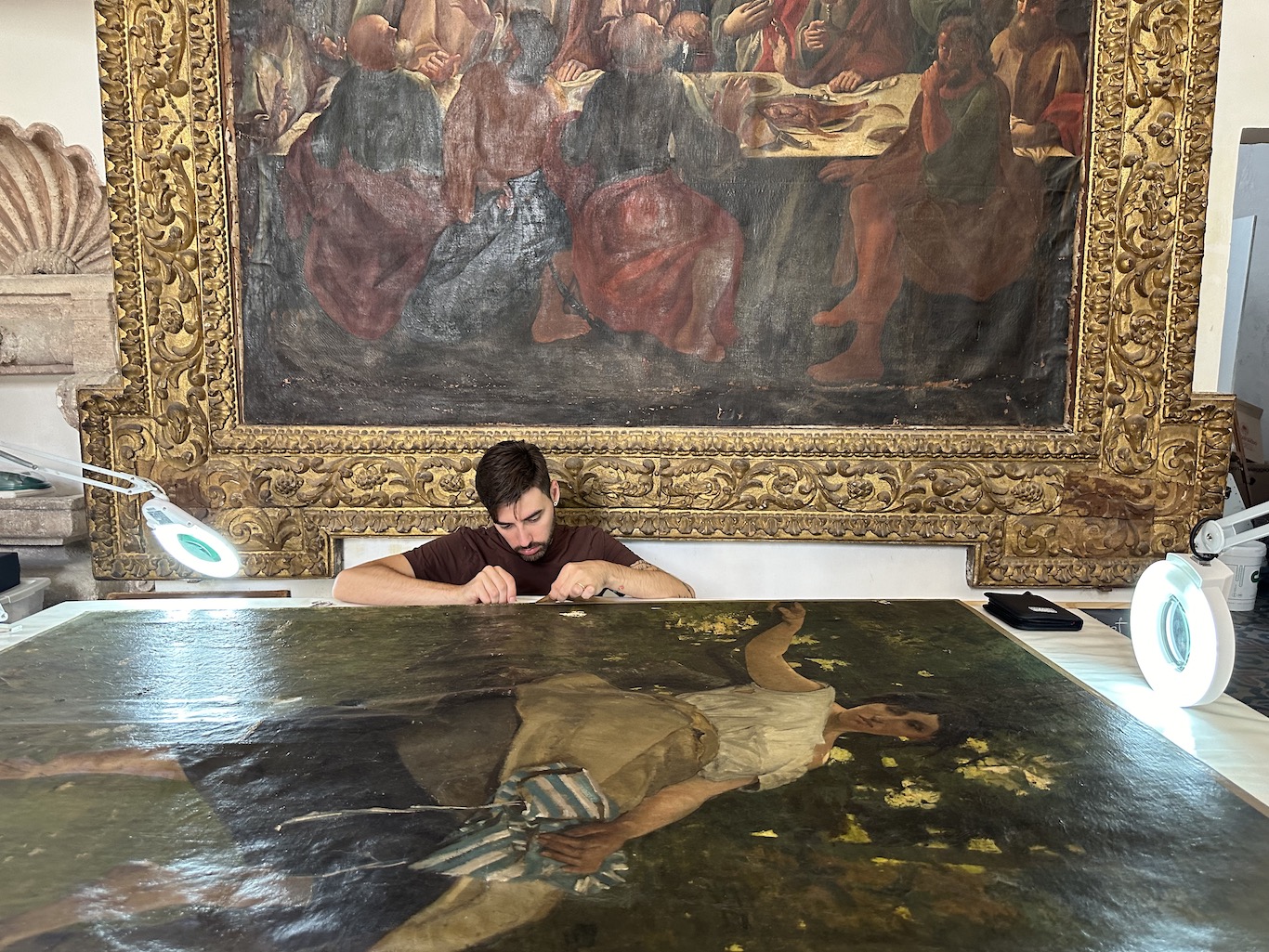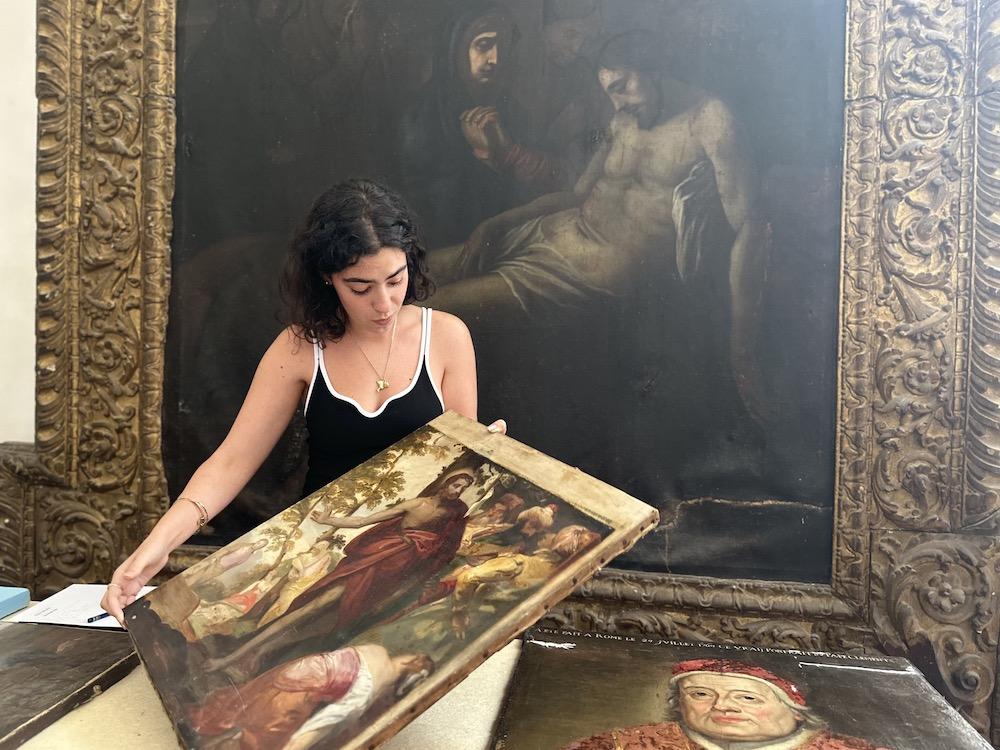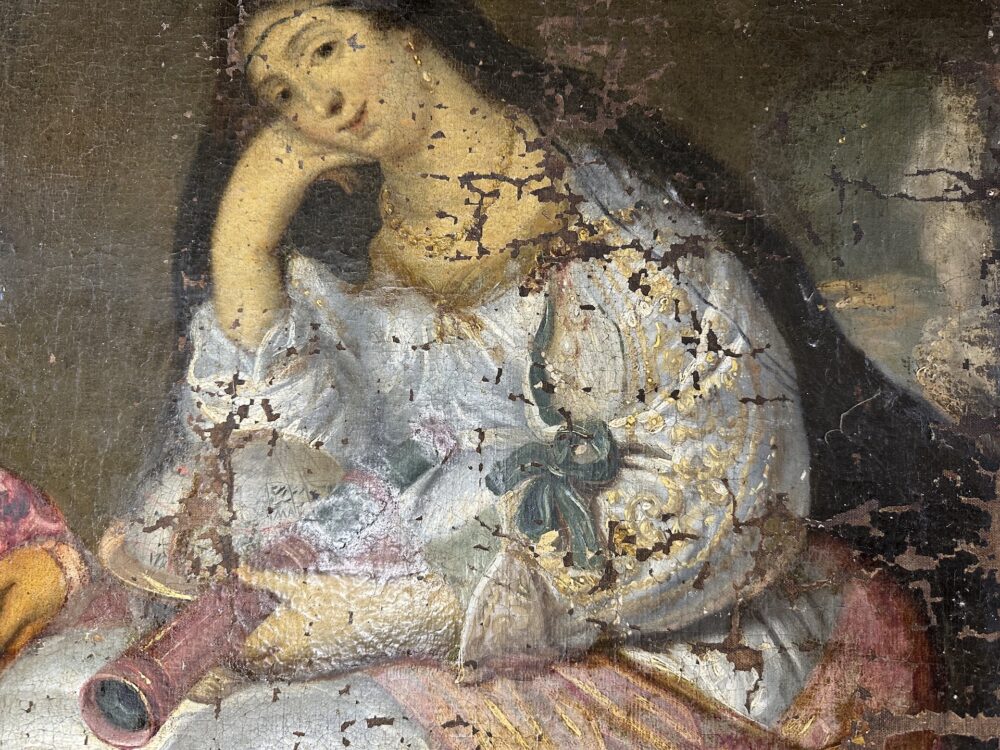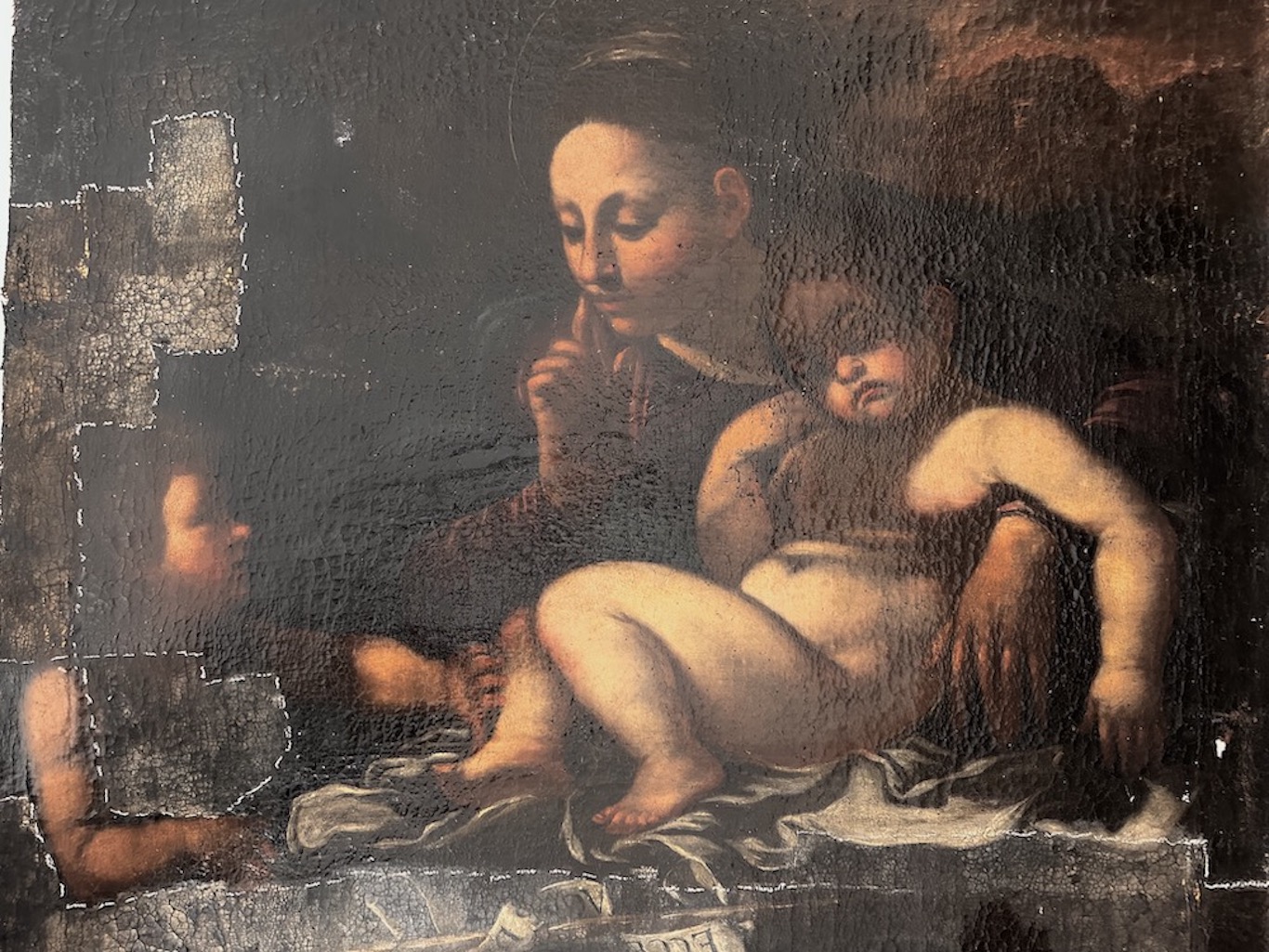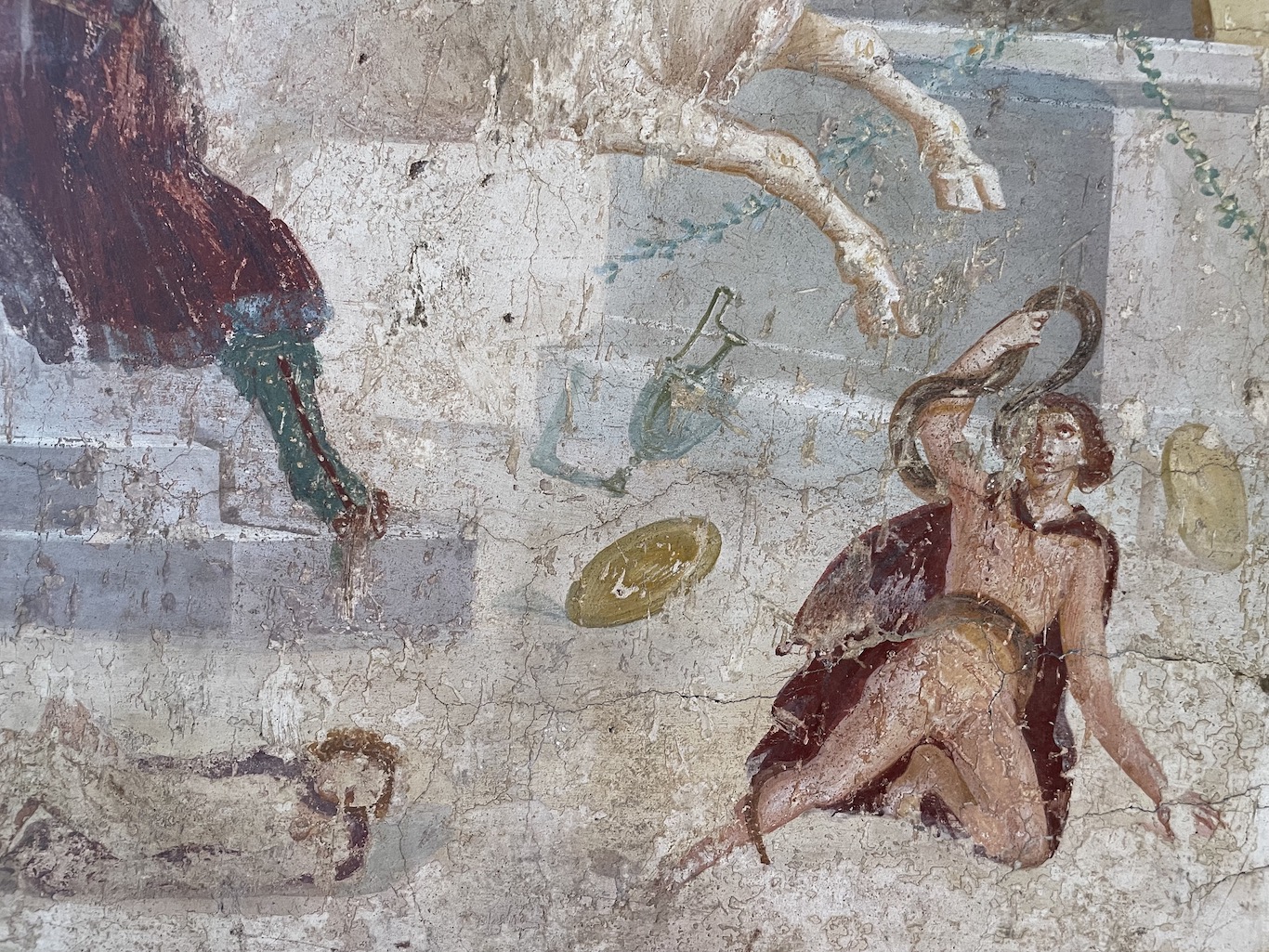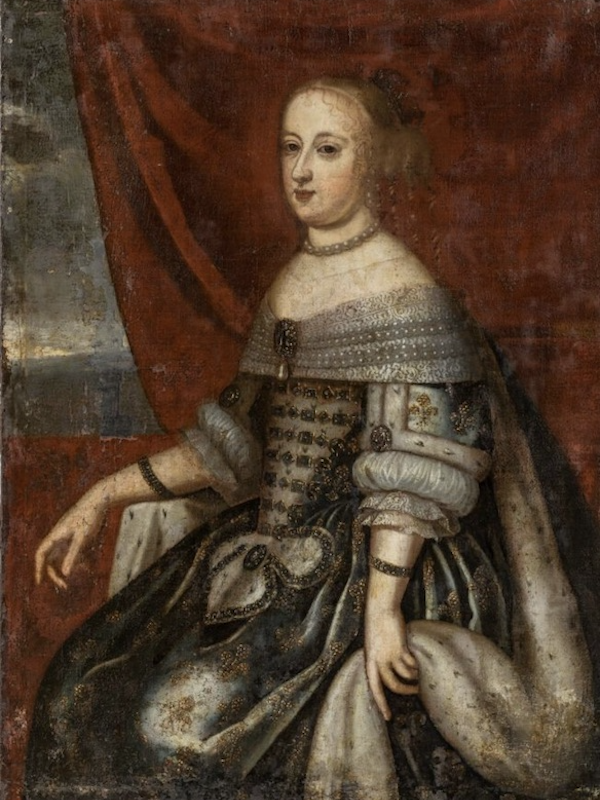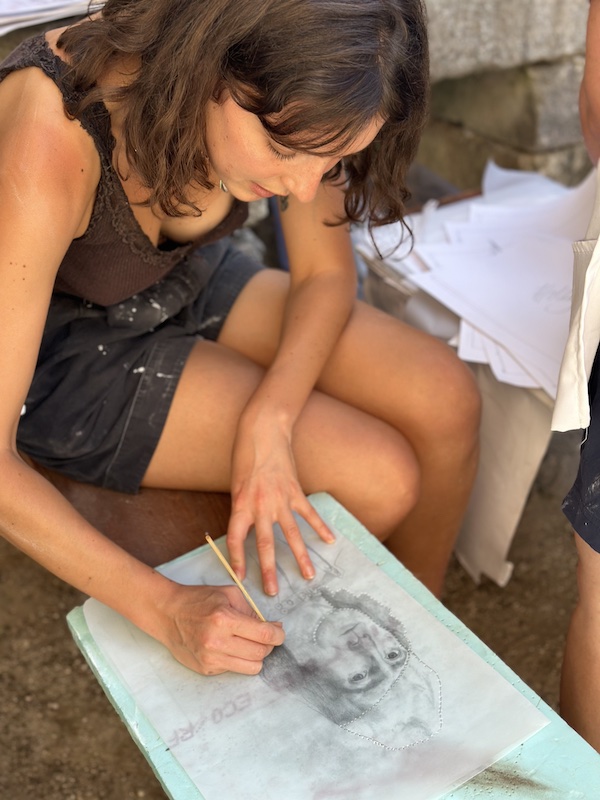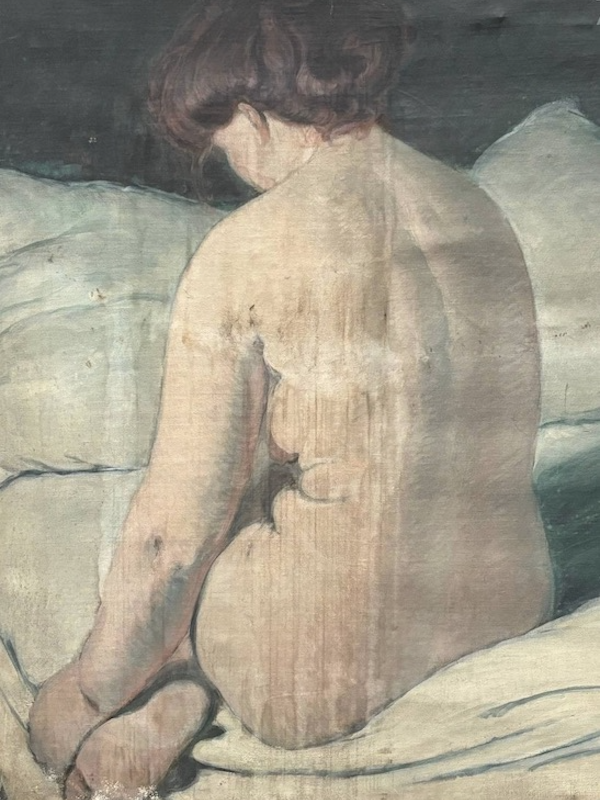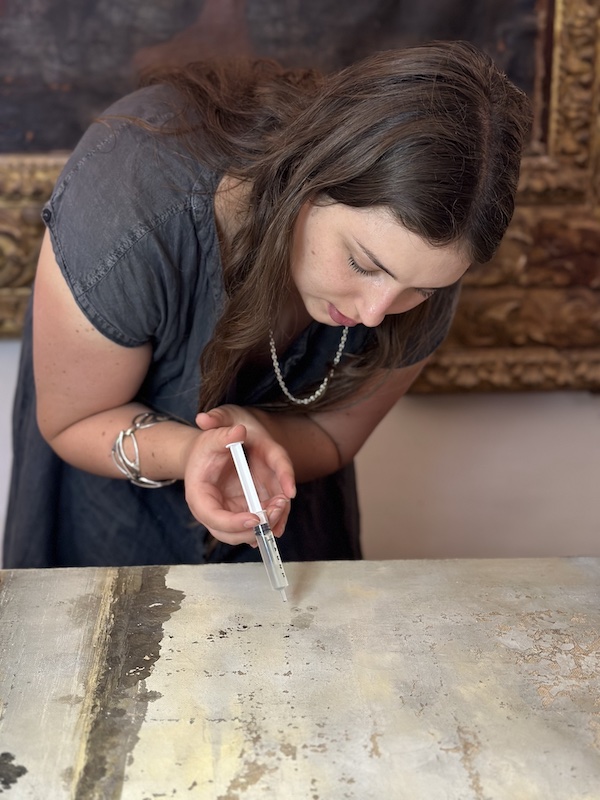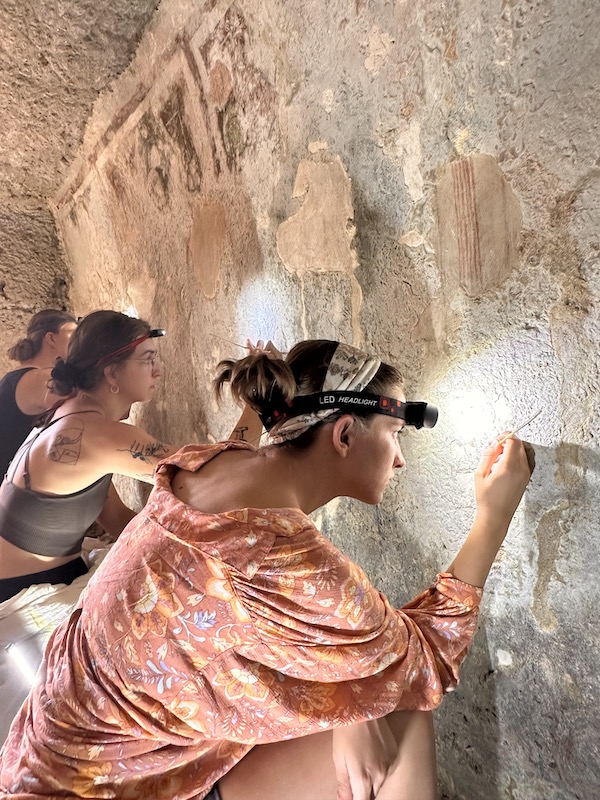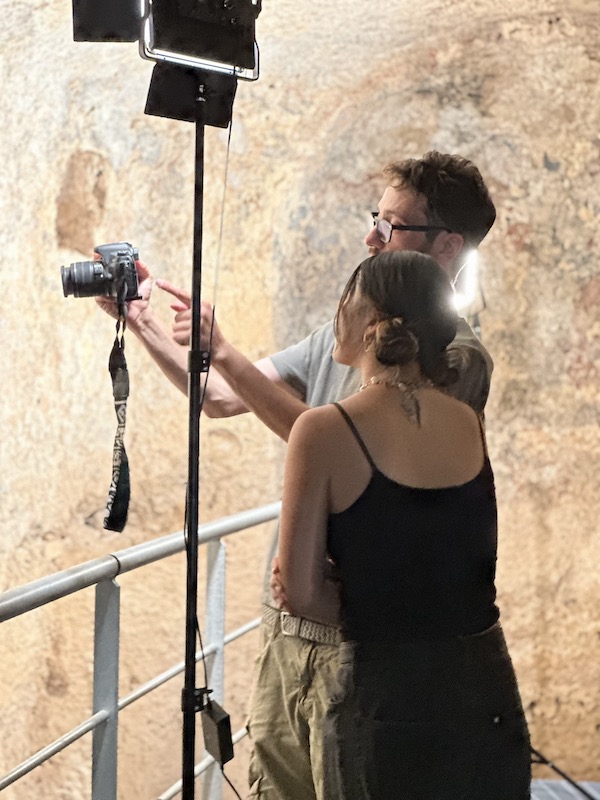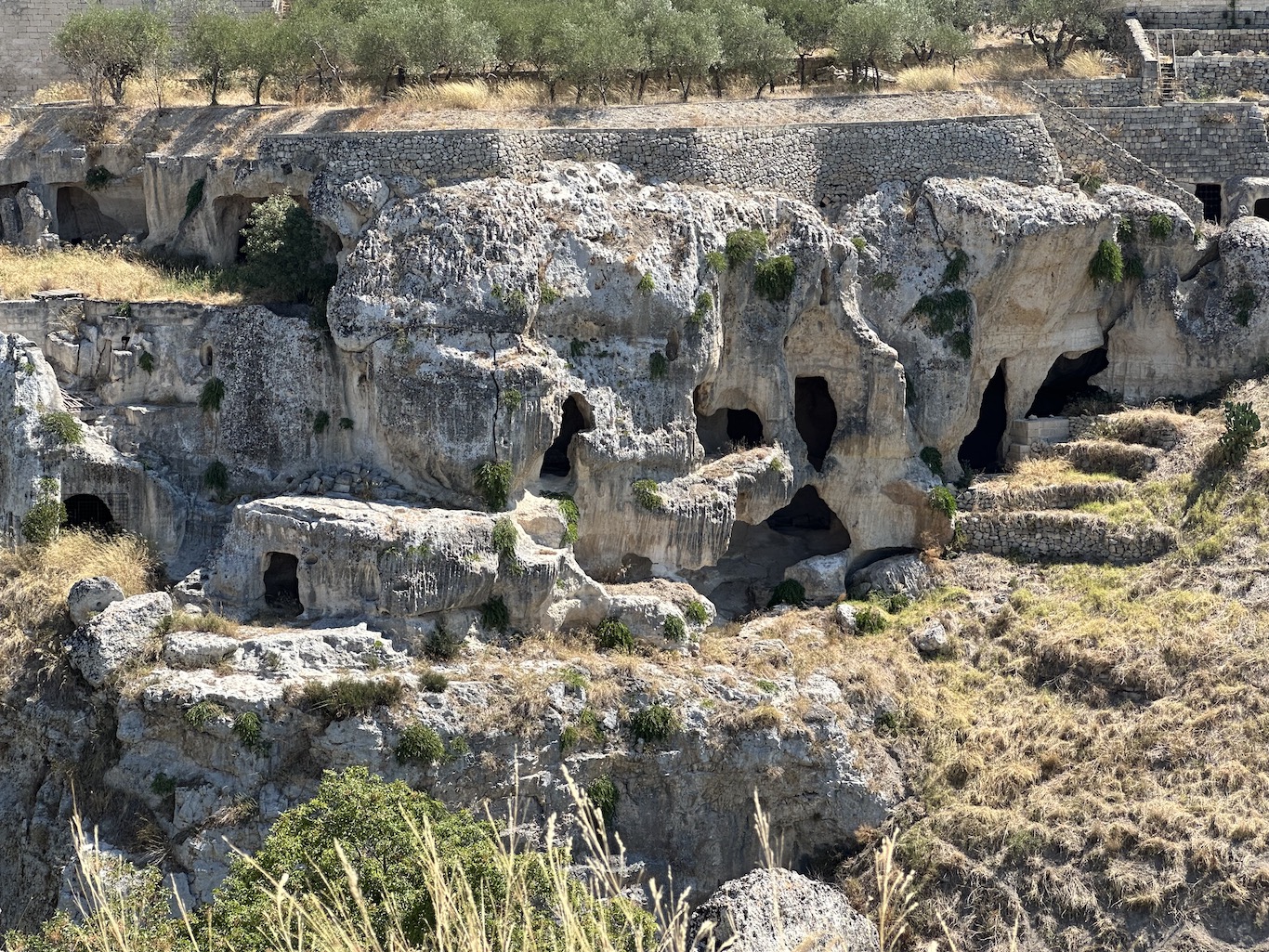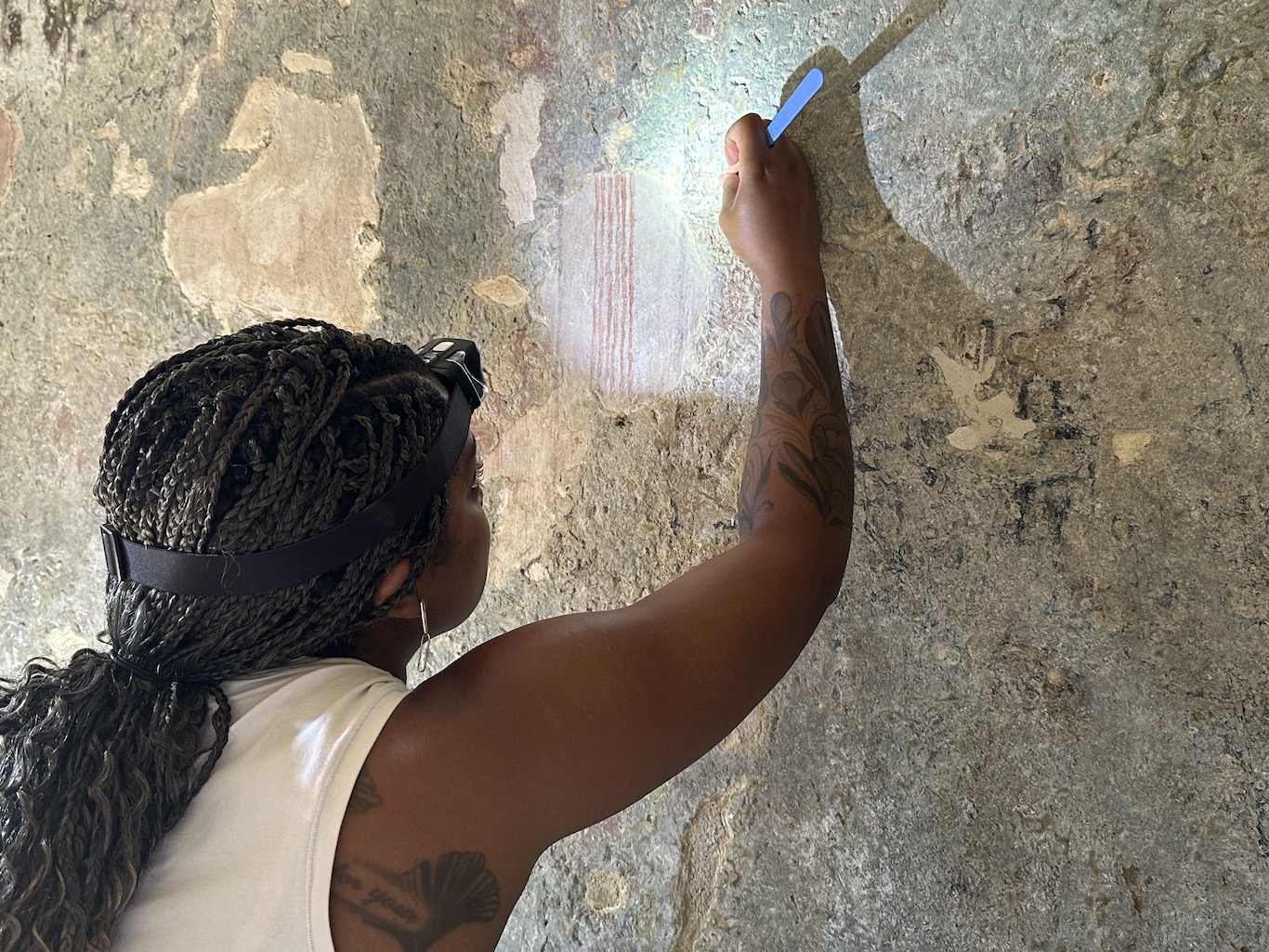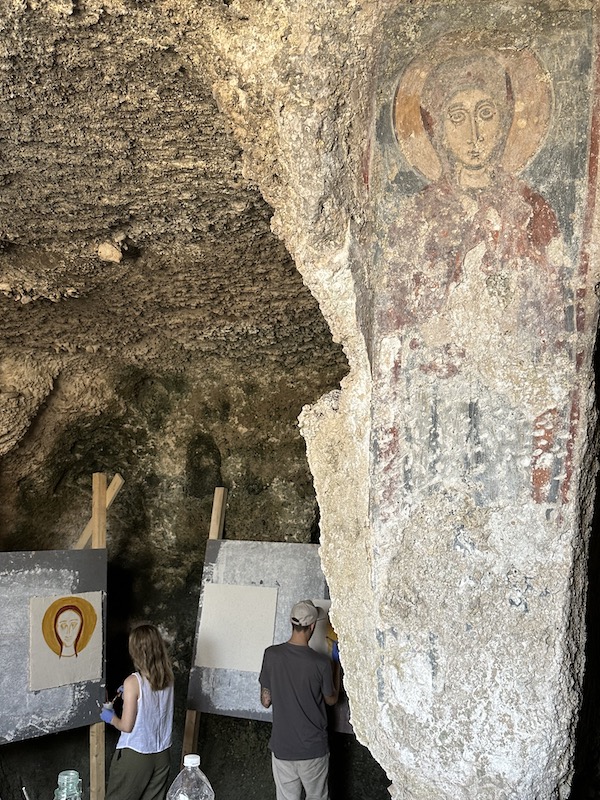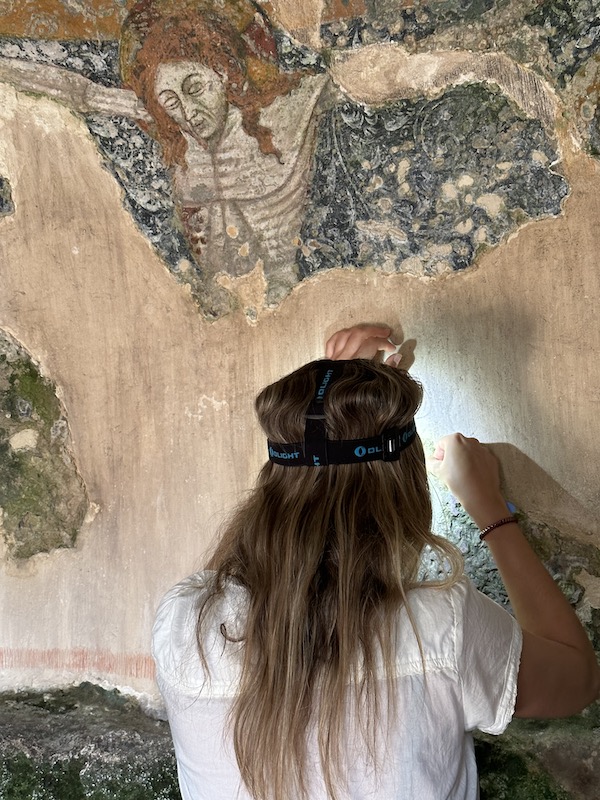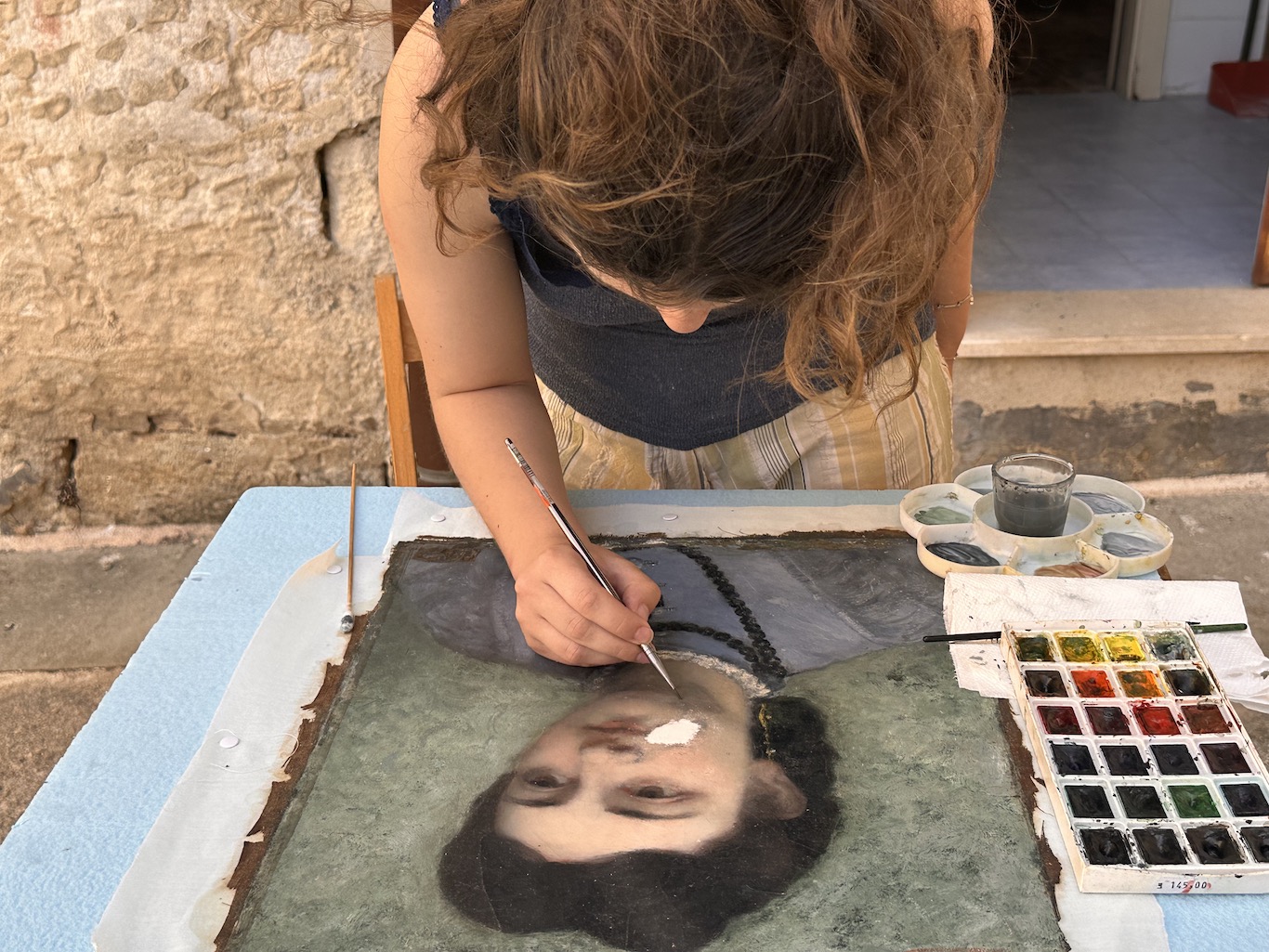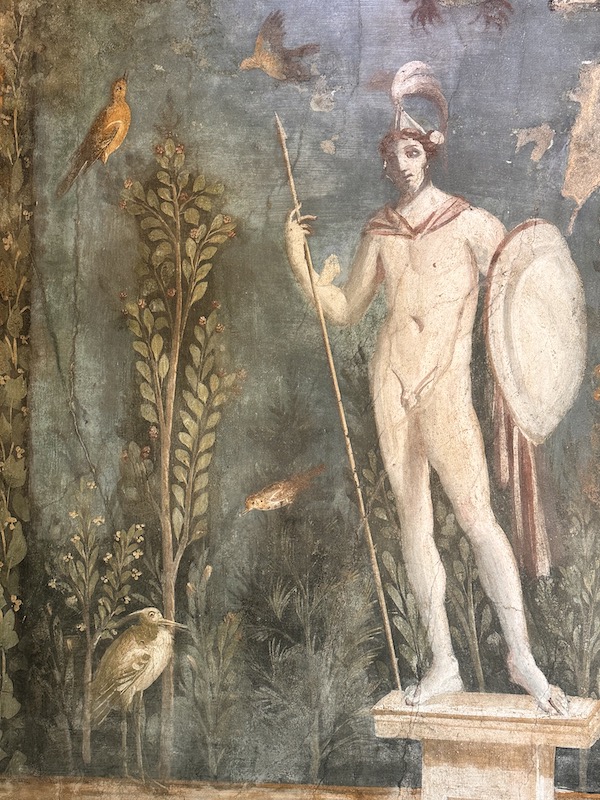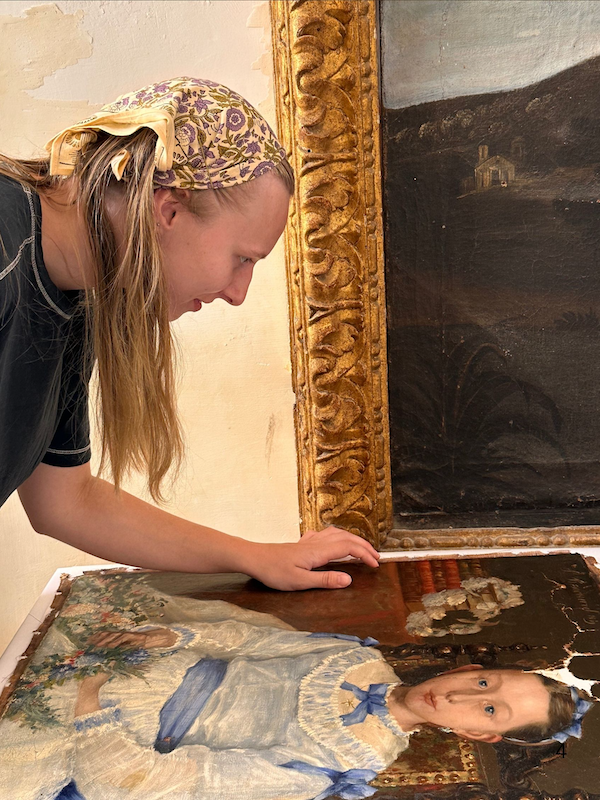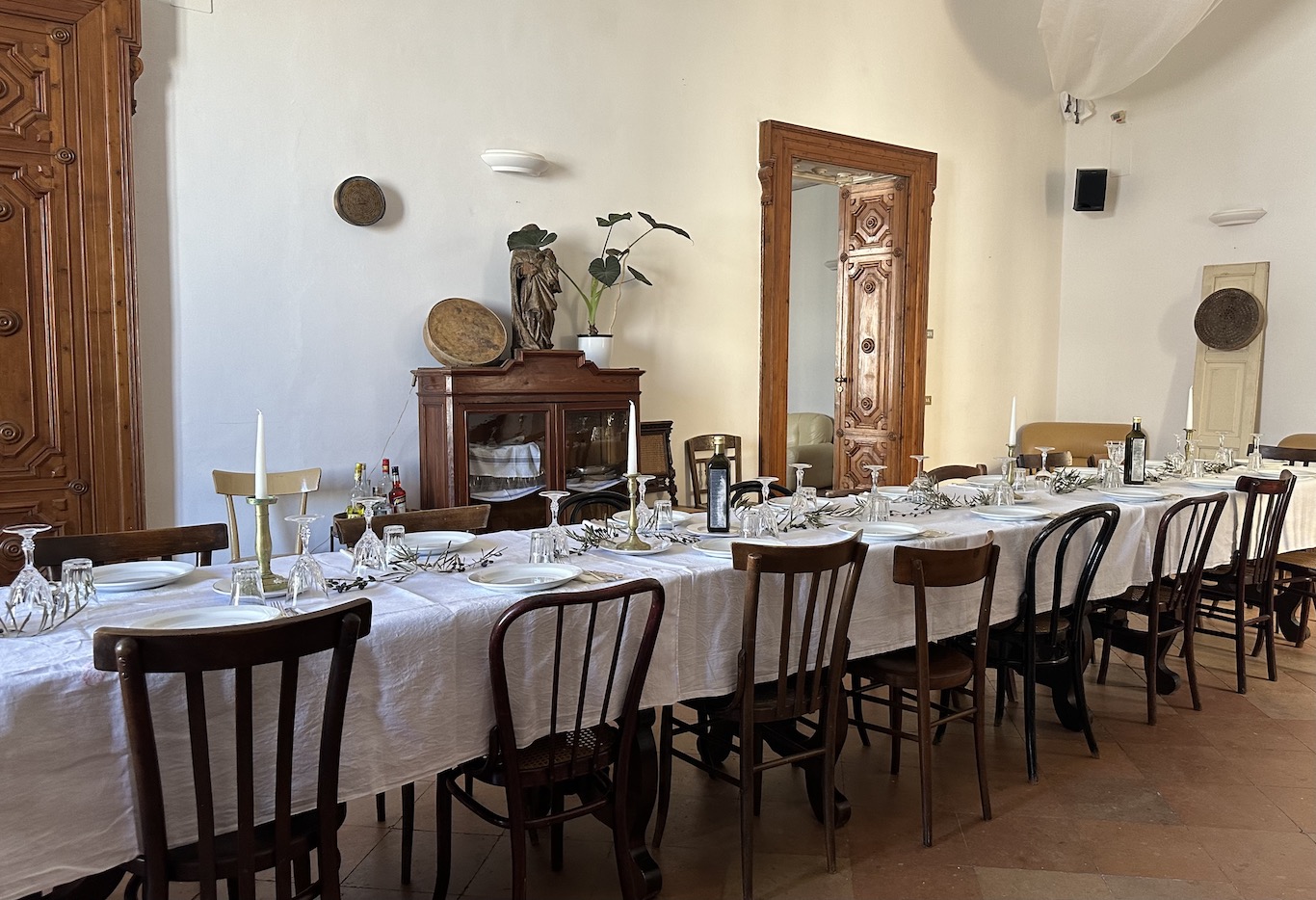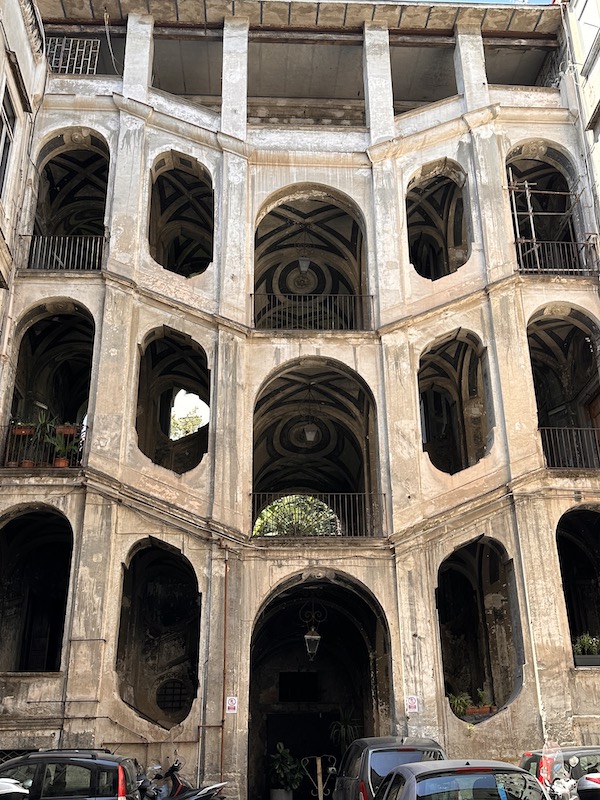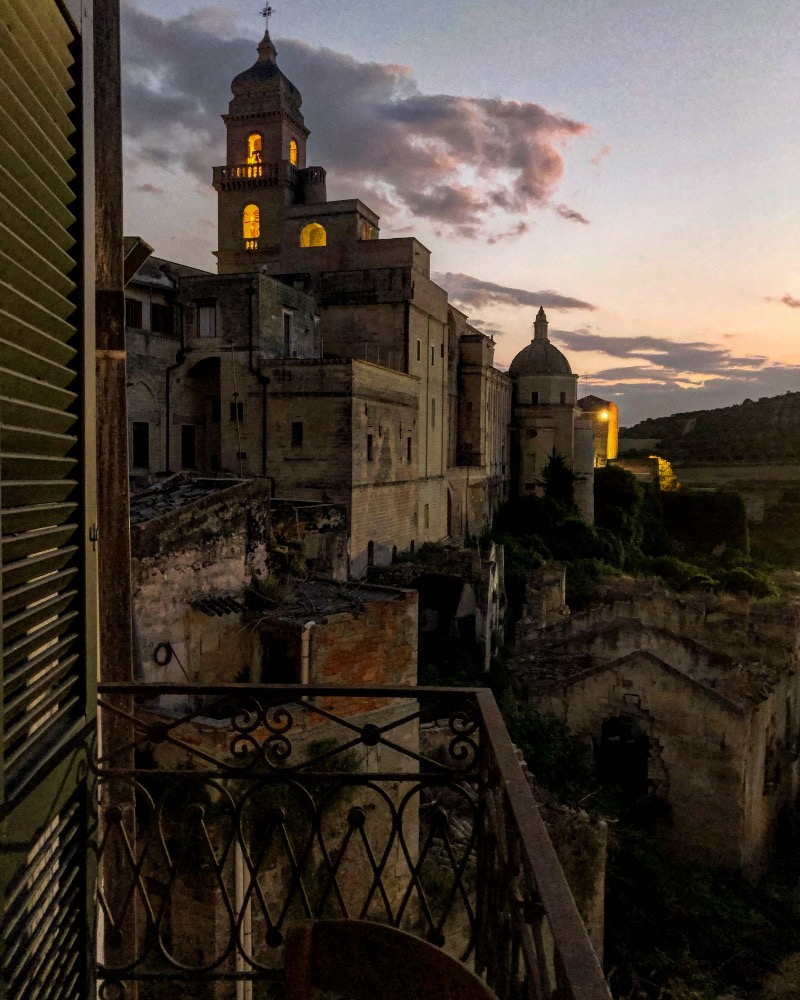Art Conservation Workshop Study Program In Italy
The workshop provides immersive, hands-on experiences in art conservation focused on 17th – 20th-century European paintings, alongside foundational instruction in the conservation of rupestrian frescoes from the 15th century.
The conservation studio is located in a 17th-century ducal church in the heart of Gravina’s historical centre.
This workshop offers an in-depth exploration of cultural heritage conservation, with a specific emphasis on fine art and fresco preservation set against the vibrant cultural backdrop of Southern Italy. Participants will engage in a curriculum that combines theoretical frameworks with practical applications in the conservation of paintings and frescoes in rural in-situ settings.
Additionally, seminars on historical context, iconography, and technical analysis will enrich the participants’ understanding of the complexities involved in art conservation.
The course includes visits to local rupestrian and archaeological sites, and to UNESCO World heritage sites of Sassi di Matera, and a two-day field trip with guided visit to Pompeii Archeological Park and overnight in Naples.
2025 courses dates
- July 2 – 16, 2025
- July 23 – August 6, 2025
The session begins with an introduction to the fundamental principles, standards and guidelines pertinent to art conservation. Participants will gain practical experience through workshops, excursions to significant cultural sites, and engaging lectures.
Research and conservation of frescoes will take place in the rupestrian settlements (underground habitations) of the Alta Murgia area, offering a unique opportunity to study artwork within its historical context.
The course includes several site visits: Sassi of Matera (Unesco World Heritage site), the Rupestrian Churches Park, various museums and art exhibitions.
Participants will also have the opportunity to further immerse themselves in Southern Italy’s artistic legacy during a two-day field trip to Pompeii and Naples and discuss the conservation efforts to preserve these important cultural sites.
The workshops are led by Messors founder and director Tonio Creanza, Art and Cultural Heritage conservator and Filip Petcu, painting conservator and director of Muzeul Național de Artă Timișoara and lecturer at the University of the West, Faculty of Arts and Design, Conservation-Restoration of Painting Department, Timișoara – Romania, and Joana Diniz painting conservator.
The Paintings
The European paintings in the studio span from the 17th to the 20th centuries, providing participants with a comprehensive introduction to the diverse materials, supports, and conditions that these artworks exhibit. Participants begin by conducting a baseline condition report and formulating a conservation plan, laying the groundwork for their understanding of art conservation principles.
Focused on hands-on learning, the workshop enables participants to practice fundamental conservation techniques. These include stabilizing supports and pictorial layers, repairing tears, and addressing paint losses through infilling and inpainting methods. Participants also learn to manage complexities arising from previous restorations, varying storage environments, and challenges posed by humidity and other factors. Additionally, participants will learn to prepare treatment solutions, gels, and materials relevant to conservation efforts.
Supplementing the practical experiences, the workshop incorporates a series of lectures and demonstrations covering the foundational concepts in chemistry as they relate to conservation, the historical evolution of conservation and restoration theory, and the study of iconography, all of which contribute to a well-rounded educational experience in the field of art conservation.
Fresco Conservation
Studies focus on the long-term fresco preservation projects of Byzantine and Medieval fresco sites, which are part of the Alta Murgia area’s more expansive rupestrian landscape.
The fresco conservation unit offers experiential learning in situ, enabling an understanding of the detrimental environmental factors that affect the site’s preservation.
The unit emphasizes the cultural importance of these heritage locations and highlights the necessity of involving local communities in conservation planning and stewardship, particularly for largely unmonitored rural areas.
Participants create a fresco ex-novo using traditional techniques and materials, plaster, sinopia, and painting with natural pigments to understand the process involved in the fresco technique and the related degradation phenomenon.
The Rupestrian Sites
In these rural settings, the ipogei (underground settlements) represented important centres of social and religious activities. The communities of this area created their own cultural identity, finding artistic expression in works of religious iconographic art.
Between the 8th and the 12th centuries, small monastic and lay communities emigrated to Southern Italy. The high Murgia was one of the places of major activity due to it being the point of contact between two religious currents: the Latin Monastic tradition and the Basilian monks from Cappadocia (Turkey) and Armenia, of Greek Orthodox origin.
In 2014, we embarked on the conservation project of the Fornello rupestrian site which includes a Byzantine fresco cave, twelve additional cave dwellings, and a surrounding settlement dating back to the 3rd-century B.C.E. It is one of the most interesting and historically important sites in the Murgia region of Puglia.
The frescoes are comprised of three layers dating from 1100, 1200, and 1350. They documented a link and a time in history when Byzantine communities from the Balkans established themselves in Puglia in the Rupestrian settlement.
Workshop Dates 2025
Course 1: July 2 – 16, 2025
Course 2: July 23 – August 6 , 2025
- Includes arrival and departure dates
What to expect
Onsite work and study are scheduled in full days. Conservation procedures in underground caves alternatively with studio work on paintings, lectures, one to two hours field walks, archaeological sites, and historic towns, full days out, one to two hours drive to visit other site destinations, Meals: homemade regional dishes, picnics, local osterie’s and pizzeria’s, accommodation in shared bedrooms.
Typical schedule: breakfast, Lectures/practical work in the mornings. lunch, Excursions and visits in the afternoon. Day trips to historical sites with lunch on site. Towns and rural countryside settings.
2025 Workshop Fee:
3950 EUR
- Includes: tuition and lectures, workshop instructions, guided tours and transportation during field trips, entrance admissions to Pompeii and local sites, museum Foundation E. Pomarici-Santomasi and the Crypt of the Original sin, overnight in Naples, your stay (shared occupancy) at our workshop accommodation, meals (exception of 5 dinners, 4 lunches, 4 breakfast), transportation from and to Bari on arrival and departure day.
- Does not include: personal expenses such as airfare, train fare, health & travel insurance, or spending money.
Field Trips & Excursions
- Unesco World Heritage Site of Matera and its Sassi
- Rupestrian frescoed churches
- Guided visit to the Archaeological Park of Pompeii
- Napoli, with an overnight in the Parthenopean capital
- Gravina, Museum Foundation E. Pomarici Santomasi
- Botromagno Archaeological Park
- Necropoli del Padreterno
- Metapontum, Greek Temple of Hera
- Cripta dei Cento Santi (Cripta de Peccato Originale)
- Family-style long table dinners and picnics, dinners out
- An afternoon swim at the beach or an evening on a coastal town.
- Museo Archeologico Nazionale di Napoli (optional, entrance ticket not included in tuition fee).
- Cappella Sansevero, Napoli (optional, entrance ticket not included in tuition fee).
*Field trips and projected itinerary are subject to changes depending on weather conditions, museum and third parties operating hours, and unforeseen circumstances.
Registration.
For inquiries and/or requests for an application form, email messors.tonio@gmail.com.
This is a hands-on and in-situ workshop to complement studies in the fields of conservation, arts, history & anthropology, archaeology, etc. It is open to students and those keen on understanding the processes of restoration & preservation of art and cultural heritage.
We remind applicants that works of art and historical sites are part of the National Italian Cultural Patrimony and must be treated with care and attention. Any practical intervention and actions while learning are under supervision and guidance.
The activities in this workshop involve handling tools like scalpels and chisels, fine motor skills, and operating in a low-lighting environment in the cave sites.
Also, we remind participants to be aware that we will be spending some full days out, which entails walking in open fields and uneven terrain, ancient towns with stone paths, stairs, hills, etc, and working on a rural site; to expect summer temperatures in southern Italy; to assume the responsibility of being in good health and physical abilities to undertake the workshop.
As all of the participants range greatly in age and background, we ask you to be considerate of all participants and be a fellow participant who can participate in activities and walks and appreciates being ready for some impromptu experiences which will arise that create adventure and learning environment.
Workshops are instructed in English, and lectures are translated when necessary.
Registration by application, healthy individuals, age range suggested 18 – 65.
Applicants not in the suggested general age range are welcome to inquire in order to over site details and what to expect.
You must be 18 to register (16-year-old if accompanied by an adult).

